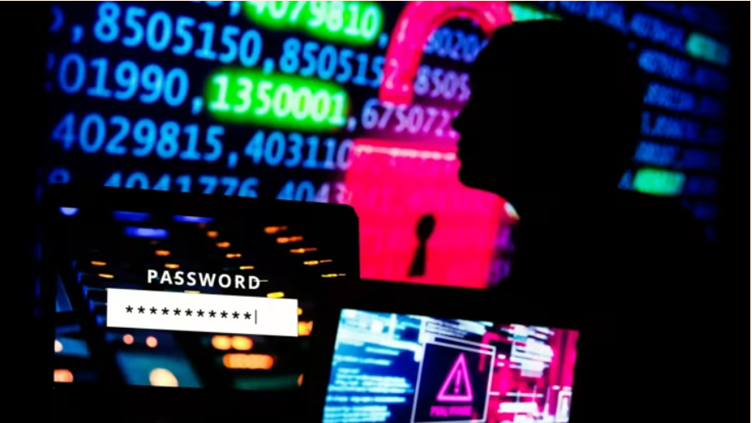Quick Wins for Cyber Essentials
Building Invincible Defences for Businesses
The digital era is well upon us, the imperative for rock-solid cybersecurity has never been more glaring. Enter Cyber Essentials: a powerhouse framework endorsed by the UK government, engineered to empower organisations in fortifying their defences against pervasive online threats.
Achieving Cyber Essentials certification is not only a recognition of a company's commitment to cybersecurity but also a practical step towards safeguarding sensitive information, maintaining customer trust, and ensuring overall business resilience. Here, we explore some quick wins for Cyber Essentials, focusing on practical strategies to enhance your organisation's cybersecurity posture.
Introduction to Cyber Essentials
Cyber Essentials provides a foundation for securing the most critical aspects of business information technology. The scheme is applicable to organisations of all sizes and sectors, offering a set of basic controls that, when implemented effectively, significantly reduce the risk of common cyber threats. These controls encompass areas such as firewalls, secure configuration, user access control, malware protection, and patch management.
Download your FREE IT. Security Checklist here!
Quick Wins for Cyber Essentials
1. Firewall Configuration and Internet Gateways
Overview: Firewalls act as a barrier between your internal network and the internet, monitoring and controlling incoming and outgoing network traffic. Configuring firewalls correctly is a fundamental step in securing your network.
Quick Wins:
- Ensure that firewalls are in place and configured to deny unauthorised access.
- Regularly review and update firewall rules to reflect changes in business requirements.
- Restrict inbound and outbound traffic, allowing only necessary communication.
2. Secure Configuration
Overview: A secure configuration involves configuring systems and devices securely to minimise vulnerabilities. Unnecessary services and features should be disabled or removed to reduce the potential attack surface.
Quick Wins:
- Regularly review system configurations to align with security best practices.
- Remove or disable unnecessary services and features.
- Apply security patches promptly to address known vulnerabilities.
3. User Access Control
Overview: User access control ensures that individuals have the appropriate level of access to systems and data based on their roles. Limiting access rights minimises the risk of unauthorised activities.
Quick Wins:
- Implement the principle of least privilege, providing users with the minimum level of access required for their roles.
- Regularly review and update user access permissions, revoking unnecessary privileges.
- Educate employees on the importance of strong, unique passwords.
4. Malware Protection
Overview: Malware protection involves implementing measures to prevent, detect, and remove malicious software. This includes viruses, ransomware, and other forms of malware that can compromise systems and data.
Quick Wins:
- Install reputable antivirus and anti-malware software on all devices.
- Regularly update malware definitions to ensure protection against the latest threats.
- Conduct regular scans of systems and devices for signs of malware.
5. Patch Management
Overview: Patching is the process of applying updates or fixes to software to address known vulnerabilities. Keeping systems up to date is crucial in preventing exploitation by malicious actors.
Quick Wins:
- Establish a patch management process to regularly review and apply software updates.
- Prioritise critical security patches to address high-risk vulnerabilities promptly.
- Test patches in a controlled environment before deploying them across the organisation.
6. Secure Remote Working
Overview: With the rise of remote work, securing the remote access infrastructure has become paramount. Implementing secure practices for remote working helps protect sensitive data outside the traditional office environment.
Quick Wins:
- Use Virtual Private Networks (VPNs) to secure remote connections.
- Ensure that remote access solutions have strong authentication mechanisms.
- Educate employees on the risks of public Wi-Fi and the importance of secure remote practices.
7. Incident Response and Monitoring
Overview: Having an effective incident response plan is crucial for identifying, managing, and mitigating the impact of a cybersecurity incident. Continuous monitoring helps detect and respond to threats in real-time.
Quick Wins:
- Develop an incident response plan outlining clear steps to follow in case of a security incident.
- Implement monitoring tools to track network activities and identify suspicious behaviour.
- Conduct regular drills to test the effectiveness of the incident response plan.
8. Data Encryption
Overview: Encrypting sensitive data adds an extra layer of protection, ensuring that even if unauthorised access occurs, the data remains unreadable without the appropriate decryption key.
Quick Wins:
- Implement encryption for data at rest, especially on portable devices.
- Use secure protocols (e.g., HTTPS) for transmitting sensitive information over networks.
- Regularly review and update encryption protocols to align with industry standards.
9. Employee Training and Awareness
Overview: Employees play a crucial role in maintaining cybersecurity. Training and awareness programs help educate staff about potential threats and install a culture of security within the organisation.
Quick Wins:
- Conduct regular cybersecurity training sessions for employees.
- Raise awareness about phishing attacks and social engineering tactics.
- Establish reporting mechanisms for employees to report suspicious activities.
10. Regular Security Audits and Assessments
Overview: Regular security audits and assessments help identify vulnerabilities and weaknesses in the organisation's cybersecurity posture. These proactive measures enable continuous improvement.
Quick Wins:
- Conduct regular penetration testing to simulate cyberattacks and identify vulnerabilities.
- Perform vulnerability assessments on systems and networks.
- Review and update security policies based on audit findings.
Cyber Essentials Conclusion
To conclude; Cyber Essentials provides a practical framework for organisations to enhance their cybersecurity defences. Implementing these quick wins not only aligns with the Cyber Essentials controls but also contributes to a broader cybersecurity strategy. By focusing on fundamental aspects such as firewall configuration, secure access control, malware protection, and employee awareness, organisations can establish a strong foundation for protecting against common cyber threats. As the digital landscape continues to evolve, the proactive adoption of cybersecurity best practices becomes essential for maintaining the integrity, confidentiality, and availability of critical business information.
Finding the best technologies for your business is challenging, but we're here to help!
